
31
JanBottoms Up: The History of Beer in New England
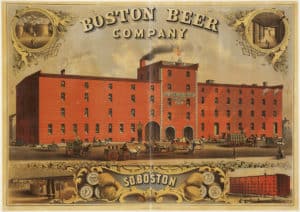 When I saw the writing on the crate, I remember getting this rush of excitement. It was an old wooden crate on the floor of my mother-in-law’s cottage in New Hampshire, which was being used as a container for all sorts of miscellaneous newspapers and magazines that had been collected by myself and the family during our many summer visits to the cottage over the years. The sturdy but aged wooden crate was clearly an antique, but to me it had always just been a fixture of the cottage; something that was always there, but never actually warranted a closer look or any further inspection. It was just, to me, an old box with some old papers in it.
When I saw the writing on the crate, I remember getting this rush of excitement. It was an old wooden crate on the floor of my mother-in-law’s cottage in New Hampshire, which was being used as a container for all sorts of miscellaneous newspapers and magazines that had been collected by myself and the family during our many summer visits to the cottage over the years. The sturdy but aged wooden crate was clearly an antique, but to me it had always just been a fixture of the cottage; something that was always there, but never actually warranted a closer look or any further inspection. It was just, to me, an old box with some old papers in it.
It’s funny how a little education can change your perspective.
This time, what DID catch my attention was the logo on the side of the box, which in black cursive read “Haffenreffer & Co. Boston, MA.” I was beside myself. Having been on the Samuel Adams Brewery tour, well, more times than I care to admit, I recognized that Haffenreffer was the defunct beer company whose old location in Jamaica Plain is the current home of the Boston Beer Company (makers of Samuel Adams and Angry Orchard). Haffenreffer closed in 1965, so I asked my mother-in-law how she acquired the crate. She told me that my wife’s great grandfather, an Irish Immigrant, worked at the then bustling brewery, and the family had kept one of the crates he used to “bring home the beer” as a souvenir.
New England actually has a very deep and interesting history with beer. In her book Crafty Bastards: Beer in New England from the Mayflower to Modern Day, author/historian Lauren Clark delves into the history of beer brewing in New England. I was lucky enough to meet Lauren Clark and listen to her speak at the Weymouth Public Library five years ago (she has also given the same lecture on her book for the Morrill Memorial Library), and both her book and her lecture were fantastic. In Crafty Bastards, you might be surprised to learn that one of the reasons that the Pilgrims landed in Plymouth, Massachusetts was because they ran out of beer on the ship! As she researches in her book, the Pilgrims brought beer on their voyage, which they drank in place of water. Beer has a low PH level (4-5) so it does not harbor pathogenic bacteria, and beer also supplied them with extra calories for their long journey to the New World. Another excellent read is Drinking Boston: A History of the City and its Spirits, by Stephanie Schorow. Though not an exclusively beer-based book, Schorow discusses the history of distilling and brewing in Boston. WBUR interviewed Schorow (in Boston’s historic J.J. Foley’s Irish Pub, no less) in 2013 about her book, and it is well worth a listen!
For a more recent example of how New England beer has influenced America, and if you want to pick up some solid business tips, be sure to check out Quench Your Own Thirst: Business Lessons Learned Over a Beer or Two, by Samuel Adams founder Jim Koch. Koch gives an intimate firsthand account of what it was like to start the now iconic brand. He chronicles his own family history with brewing, how he got inspired to start his own business, and the difficulties of running up against beer juggernauts like Anheuser-Busch and Miller/Coors. Today it seems like everywhere you look, there is a new craft brewery popping up, but when Koch was getting started, the craft beer craze had not yet taken off, so he was one of the first to really challenge the established beer companies of the time. His book is filled with great insights into how to run a business, and also gives a great history lesson on the founding of a local favorite. I recommend it to aspiring entrepreneurs and beer lovers alike.
Speaking of the craft beer craze, you might be ready to explore some of New England’s most recent upstarts and trailblazers, and there are a lot of them. Lucky for you, we at the Morrill Library can get you started on your journey! Your first stop, of course, should be Norwood’s own Castle Island Brewing Co. which has some fantastic brews and is well worth a visit. However, when you are ready to branch out further, be sure to get the book Beer Lover’s New England, by Norman Miller, which gives a comprehensive guide to some of the best breweries and bars in all of New England, and even gives some suggestions for pub crawls. Norman Miller also wrote Boston Beer: A History of Brewing in the Hub which you can get right now though our Hoopla app, and gives a good introduction into the history of breweries in Boston (Haffenreffer included).
You might not initially think to go to the library to learn more about beer, but beer is so much more than just a drink, isn’t it? Like that old wooden crate, something that seems commonplace can, in fact, have a long history and deep history, and you might not even realize it. I think part of the fun of drinking beer (other than the obvious) is learning about that history and how it shaped the craft beer revolution that we see today. So grab a pint and a good book from our library, and learn more about that history. Bottoms up, New England.
Brian DeFelice is the Information Technology Librarian at the Morrill Memorial Library in Norwood, MA. Look for his article in the January 31, 2019 issue of the Norwood Transcript.
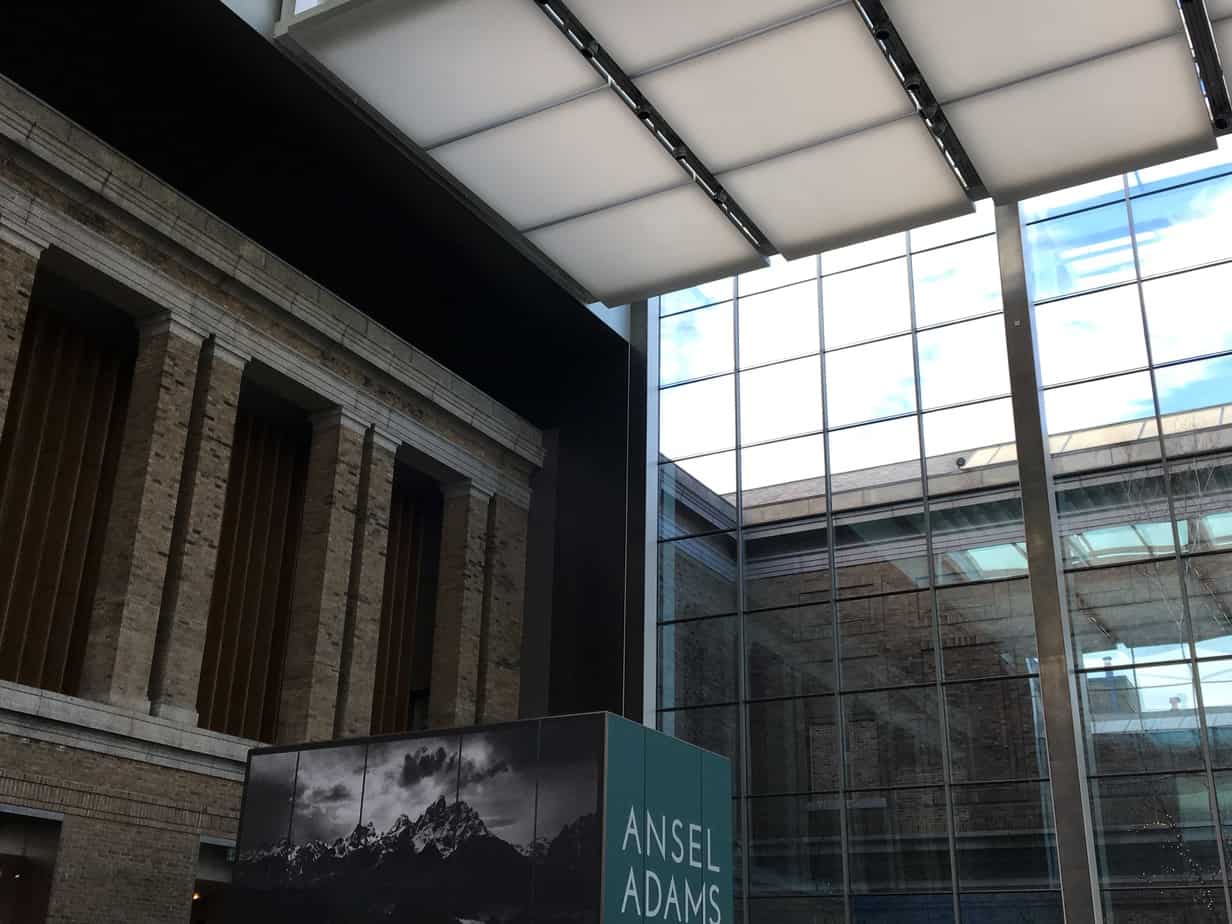
24
JanReflections on My Life with Ansel Adams
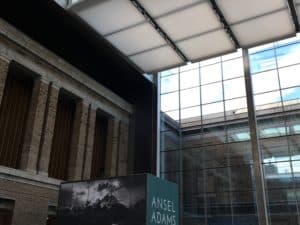 In some ways Ansel Adams confirmed that my husband and I were a match made in heaven. No, I did not know the famous photographer personally. No, he did not arrange my first date with my husband through a Sierra Club app. However, his photography played a role in sealing our fate.
In some ways Ansel Adams confirmed that my husband and I were a match made in heaven. No, I did not know the famous photographer personally. No, he did not arrange my first date with my husband through a Sierra Club app. However, his photography played a role in sealing our fate.
You see the first time I ventured to my future husband Vincent’s condo in Brighton for a homemade dinner I noticed a few things. First, we owned the same rice cooker. This was amazing in itself because I had acquired mine from a family friend who had taught at the university with my father. The professor was heading back to his home in Hong Kong, so he kindly dropped off the rice cooker for us to use. Believe me when I say at that time I don’t think there was anyone else in my hometown of Farmington, Connecticut who owned a rice cooker, nevermind this particular model. To find out Vincent owned the exact same one was nothing short of miraculous.
But I digress. The other thing I noticed was Vincent’s décor. His place was completely modern compared to the antique New England look that was familiar to me. It was like seeing an IKEA showroom before I knew about IKEA. And there, on his living room wall above his keyboard, stood two framed Ansel Adams prints: Moon and Half Dome and Old Faithful Geyser. While I owned a coffee table-sized book entitled Ansel Adams In Color, edited by Harry M. Callahan, the full-sized prints on his wall had a completely different effect. I was transported to another time and place.
In this way Ansel Adams brought us together. I looked at Vincent with new appreciation and through the lens of this great photographer. After all, my future husband was not like anyone I had dated before. As a Chinese-American who grew up in San Francisco, he was surrounded by a world much like the one Adams experienced. These beautiful portraits of nature were in his back yard, so to speak, and they were directly opposite from the tight, curving New England roads that I knew and loved.
Still, I could feel the West calling to me, as so many others have when they fall into the world of Ansel Adams. I wanted to see these wild and lonely places. This is truly the beauty of his work. As Robert Frost’s words call to a place deep in our souls, so do Ansel Adams’ landscapes. When we observe them, we long for the quiet, the simple, and the majestic.
As Robert Turnage wrote in a piece for the Ansel Adams Gallery, “Wilderness has always been for Adams ‘a mystique: a valid, intangible, non-materialistic experience.’ Through his photographs he has touched countless people with a sense of that mystique and a realization of the importance of preserving the last remaining wilderness lands.”
Like many famous people, Adams did not have an easy start to life. As the children’s book, Antsy Ansel: Ansel Adams, a Life in Nature, by Cindy Jenson-Elliott (Illustrated by Christy Hale) reveals, Adams was an antsy child. He couldn’t sit still in school long enough to learn, and so his parents allowed him to be home-schooled and learn outside from nature. “’Why don’t you go outside?’ suggested his father. So Ansel did, whenever he could.” The day that his parents gave him a camera changed his life and our world, too. There was no looking back.
Not surprisingly, when I noticed that the Museum of Fine Arts (MFA) was having a special exhibit entitled Ansel Adams in Our Time, I had to go. The exhibit is in the Ann and Graham Gund Gallery from now until February 24th. Some of Adams’ most famous photographs are displayed, including Moonrise Over Hernandez, New Mexico; Clearing Winter Storm, Yosemite National Park, and the one I discovered on my husband’s wall so many years ago, Moon over Half Dome. The exhibit also includes work by Adam’s predecessors, such as Carleton Watkins, Eadweard Muybridge, and Timothy O’Sullivan. Likewise, there is work by those who have followed in Adams’ footsteps and who have made statements of their own. These pieces are displayed side by side with the Master’s. This way the visitor can discover the work of photographers who might be new to them and, like Adams predicted, see the impact of the human race on our natural environment.
In particular I loved connecting with Laura McPhee Midsummer and her photograph entitled Lupine and Fireweed. As the plaque states, “Working with a large-format camera, Laura McPhee records the impact of human activity on the land—especially in Idaho, a state she loves and visits regularly.” And then there was Will Wilson. As a Native American photographer, he offered a unique perspective on the same land that moved Adams.
Whether you are introduced to new work or whether you reminisce about photography that you’ve loved for years, please go visit. It brought me back to the first time I saw Ansel Adams’ work hanging on my husband’s wall. Now they hang on OUR wall. Besides owning the same rice cooker, which seemed like a sign that we were meant to be, we had Ansel who worked his way into our lives and sealed our fate. Not a bad introduction. I guess I owe him a big thank you.
Other items you may want to check out, related to Ansel Adams and his cohorts:
Ansel Adams: A Documentary Film, Written and directed by Ric Burns
Ansel Adams: The Early Years, by Karen E. Quinn and Theodore E. Stebbins, Jr MFA
Ansel Adams: The Spirit of Wild Places, by Eric Peter Nash
The American Wilderness: Ansel Adams, edited by Andrea G. Stillman
The Camera, by Ansel Adams
Ansel Adams: Letters and Images (1916-1984), edited by Mary Street Alinder and Andrea Gray Stillman
Nancy Ling is the Outreach Librarian at the Morrill Memorial Library in Norwood, MA. Look for her article in the January 24, 2019 edition of the Norwood Transcript.
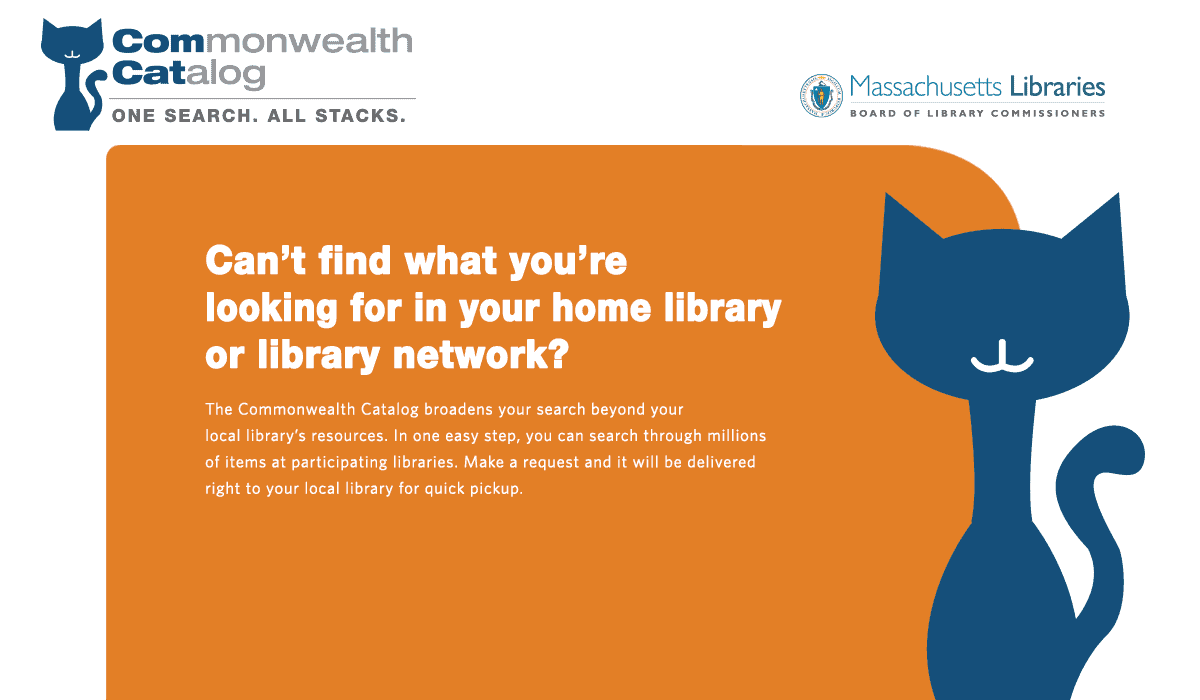
17
JanFishing for Books and Finding Cats
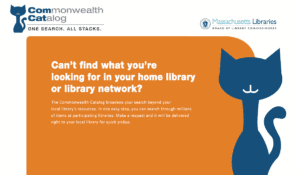 When my husband Gerry was a boy, he loved to fish the lakes and rivers in and about his Framingham hometown. When he was younger, his mother accompanied him. When he was older, he rode his bike to Lake Cochituate with his rod and reel and flirted with the trout stocked by the Department of Fishery and Game. He remembers the dump trucks that released squirmy, tagged fish near the Carling Black Label plant near Route 9.
When my husband Gerry was a boy, he loved to fish the lakes and rivers in and about his Framingham hometown. When he was younger, his mother accompanied him. When he was older, he rode his bike to Lake Cochituate with his rod and reel and flirted with the trout stocked by the Department of Fishery and Game. He remembers the dump trucks that released squirmy, tagged fish near the Carling Black Label plant near Route 9.
At the end of his adventures, Gerry brought fresh trout home, and after filleting them, his mother helped him prepare them for dinner, satisfying his family’s taste and appetite.
Perhaps because fishing intimately interacted with nature, Gerry began to fancy birds – the Great Blues that gravitate to the waters all over New England, and shorebirds he met on his Cape Cod family trips each summer. Later, he nurtured bluebirds in their wooden houses in his backyards.
Out of high school and starting college, Gerry mimicked his father’s love for golf. That first summer, he began sculpting the lawns and greens of the nearby Sandy Burr Country Club in Wayland, having time after work for a round or two on the fairways. This mutual passion with his father led to many of his friendships based on that same craving for the course, the club, and the ball. Many of Gerry’s long-time friends are those who bonded with him, playing golf in the company he has worked with for nearly 50 years. His annual late-spring golf weekend “down Cape” just celebrated its 42nd year.
Years later, Gerry became a gardener. And a colored-pencil artist. And a tie-flying hobbyist, and a home-brewer. Most recently, he’s a beekeeper, a wine connoisseur, a Boxer-lover (the dog breed), and stone-wall builder. Our kids chuckle because Gerry is so easy to please with gifts. There are endless heavy-bottomed whiskey glasses, bird carvings, local brews, and assorted jars of honey for Gerry’s passions.
And then there are books. Gerry’s collections of books are arranged by subject in our home library (which doubles as a family room). When we met over 12 years ago, he declared that he wanted to become a beekeeper. In no time, piles of books I found in the library network on beekeeping fell over on his nightstand. Gerry loves to have his favorite books at home where he can access them, and many books become his favorites. (Although The Queen Must Die! and Other Affairs of Bees and Men, written in 1985 by William Longgood is still his most beloved on beekeeping.)
It’s no surprise that Gerry found his relationship with a librarian was tolerably symbiotic. One book lover supplying another book lover’s habit is mutually beneficial!
I share much of my day-to-day professional work with Gerry. He’s up on the lingo and acronyms of librarianship and understands our strange language that includes strange meanings for the terms “weeding,” “circulation” and “collection development.”
I was surprised, then, when Gerry stumbled upon ComCat (the Commonwealth’s library catalog), and he had never noticed it before. For years, Gerry’s been very adept at finding books at other libraries and having them delivered to his home library. He is sure to tell me when one of his books from another library has arrived in Norwood and “would I check it out and bring it home?”
But what was this ComCat?
ComCat arrived back on the scene a few years ago, rising like a phoenix from the first iteration called the Massachusetts Virtual Catalog. The Virtual Catalog was conceived, created and designed with funding from the Massachusetts Board of Library Commissioners in the 1990s in the hope that all Massachusetts residents would have access to a “virtual wealth” of materials. The Minuteman Library Network joined the Virtual Catalog in 2000 – and that is when Morrill Memorial Library patrons had access to books and materials beyond the metroplex.
A bigger and better-automated system extended the search even further almost three years ago in the Commonwealth Catalog – or ComCat. Minuteman was the first network that had accessibility when ComCat went live in March 2015.
This Commonwealth Catalog now includes all of the library network catalogs in Massachusetts, including the Minuteman Library Network, Old Colony Library Network, the Metro Boston Library Network, MassCat (a small network serving small and unique libraries in Massachusetts) and the six other networks across the state. The advantage of ComCat is that library patrons can find and request materials from these other regions and have them delivered to their home library. There is no need to call the library or a reference librarian when you find something in ComCat. ComCat has a “modern and easy-to-use interface, including book jacket images and improved search options.” ComCat can be accessed through the Minuteman Library app and the online catalog.
WorldCat is a worldwide catalog and another accessible to patrons who may search the catalog to find an item, however, you must call the library and request the material through one of our librarians. There is a mailing cost associated with the delivery of these items, and librarians will always choose a more local option first.
The day that Gerry discovered ComCat, he was searching for books on custom painting his own bass fishing lures. The one book he found, Making Wooden Fish Lures: Carving and Painting Techniques That Really Catch Fish!, owned by the Newton Free Library was out – of course. He then clicked on the ComCat link (above on the right on the catalog search page) and found a school of books about fishing lures: Fishing With Artificial Lures by Dick Sternberg owned (appropriately) by one of the SAILS (Southern MA) and one of the CLAMS (Cape and Islands) libraries and Making Wooden Fishing Lures by Rich Rousseau.
To be sure, our library will be watching for more books on fishing, both flies and lures. In the meantime, Gerry and Norwood’s patrons alike have a world of books at their fingertips.
Charlotte Canelli is the Director of the Morrill Memorial Library in Norwood, MA. Look for her article in the January 17, 2019 edition of the Norwood Transcript.
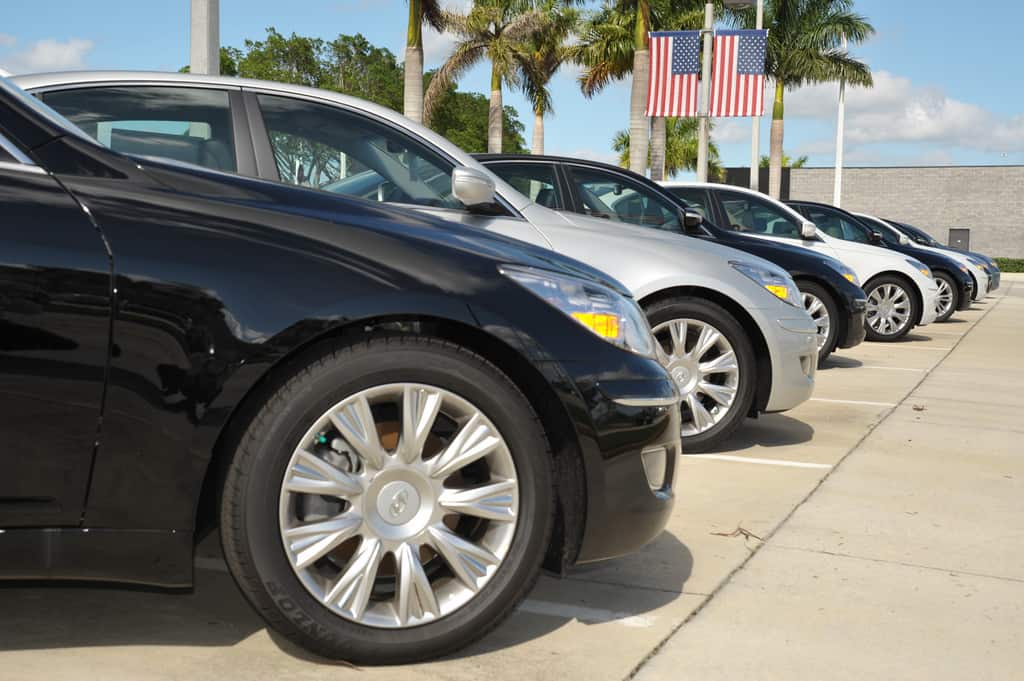
10
JanBut Does it Have Heated Seats?
 When was the last time you went shopping for a car? Purchasing a car is one of the single biggest purchases you’ll ever make, especially if it’s a brand new car. But where do you start? If you have the luxury of not needing a car immediately, what time of year should you start looking? Which sources can you trust when researching cars and comparing features? What do you need to know before you go to a dealership, and how do you know you’re getting the best deal when you’re working with the sales person? Lucky for you, dear readers, I had a recent foray into the wild world of car buying, and I want to share a few lessons I learned along the way.
When was the last time you went shopping for a car? Purchasing a car is one of the single biggest purchases you’ll ever make, especially if it’s a brand new car. But where do you start? If you have the luxury of not needing a car immediately, what time of year should you start looking? Which sources can you trust when researching cars and comparing features? What do you need to know before you go to a dealership, and how do you know you’re getting the best deal when you’re working with the sales person? Lucky for you, dear readers, I had a recent foray into the wild world of car buying, and I want to share a few lessons I learned along the way.
Like most of us, my first car was a used car. My grandmother left me her powder-blue Chevy Caprice, which was a car so big it was often described as a boat. The poor car was driven on northern roads crusty with winter salt, and therefore suffered from chronic muffler problems – so chronic, in fact, that about three-quarters of the muffler eventually rusted away. My family affectionately called it The B-52 Bomber because they claimed they could hear it coming a mile away. They weren’t wrong.
My first car buying experience was at a small country mechanic shop that sold a few cars on the side, and I traded in The Bomber for a used Honda Accord. Even used, this was a significant upgrade from the ’90s-era Caprice, and I was thrilled. However, this was not the traditional car buying experience, in that selection was extremely limited and I was buying from a small local mechanic, a friend of a friend who wasn’t operating in the same ballpark of sales margin as a suburban dealership.
Nearly a decade and well over 100,000 miles later, and I was ready for a new car. Honda makes very good cars and there wasn’t anything wrong with the Accord, but I was ready. But where to start? I had a list of features I knew I didn’t want to compromise on in a new car. I had only owned sedans in the past and was used to that low-to-the-ground driving experience, but I was also hoping for the sort of storage flexibility you get from a hatchback or small SUV.
As a librarian, research is my go-to, and because I was lucky enough to not be in a crisis of needing a new car right away I starting reading about and comparing vehicles months in advance of a test drive. Consumer Reports was my first stop. We subscribe to the physical magazine and you can look at it at the Reference Desk, but we also offer full online access to Consumer Reports so you can access it at home. Go to our website, norwoodlibrary.org, and at the bottom left of the homepage under the list of Quick Links you’ll see Databases. This takes you to an alphabetical list of all the databases we offer, and to access Consumer Reports all you need is your library card number.
Consumer Reports has a whole section of their website dedicated to buying new and used cars, including vehicle by vehicle ratings and comparisons, articles about how to choose the right vehicle for you, lists of the best and worst vehicles on the market, calculation tools for financing your vehicle, and tips for how to prepare yourself for going in for a test drive and how to bargain effectively at the dealership. Honestly, there’s such an overwhelming amount of good information on the Consumer Reports website that you should plan on making several visits to their page.
Another website I found extremely useful, especially when arming myself with research for bargaining, was CarGurus.com. This site was founded by a co-founder of TripAdvisor, and is chock-full of comparison data about new and used vehicles. You can see real prices that people are paying for vehicles you’re interested in, and you can even sell your used car through the site. Their information about real invoice price paid was one of my most important pieces of data for my own bargaining experience.
One more note about vehicle information sites – there were two other sites I used called TrueCar and Edmunds. Both of these sites contract with dealerships to give buyers competitive price quotes, but don’t be fooled into thinking these are the best prices you can get for a vehicle. While they serve the purpose of starting the conversation between the buyer and the dealership about price, be wary; in neither case did they give me the best price I could get, and in one case gave me an estimate that was thousands of dollars above a reasonable value. The dealerships have a deal with these sort of services in order to reach you, the buyer, and try to get you into the dealership faster, so take their recommendations with a grain of salt.
When looking to estimate a fair market value for trading in or selling your used car, try using Kelley Blue Book, found at kbb.com, or NADAguides, found at nadaguides.com or in print at the library’s Reference Desk.
Figure out which car you want, do your research to see what other people are paying for this car and then decide on a number that is the most you are willing to pay. Do as much communicating via email about price as you can with a salesperson at the dealership so that you have the conversation in writing. Start your bargaining by saying you want to pay a price you know is lower than you will likely pay – they will be starting their end of the bargaining at a price that is far too high, and you will both move incrementally toward the middle to settle on a price. If you bring with you printouts of your research and their emailed quotes, this will help your case. This is likely to be a lengthy and even stressful process, so be confident and stick to the amount you’re willing to pay. If the salesperson ultimately won’t agree to your terms, don’t be afraid to get up and walk away. I had to do this at one dealership and was so glad I did. I’m thrilled with the car I finally found, and couldn’t be happier starting the New Year in a new set of wheels.
Liz Reed is the Adult Services Librarian at the Morrill Memorial Library in Norwood, MA. Look for her article in the January 10, 2019 edition of the Norwood Transcript.
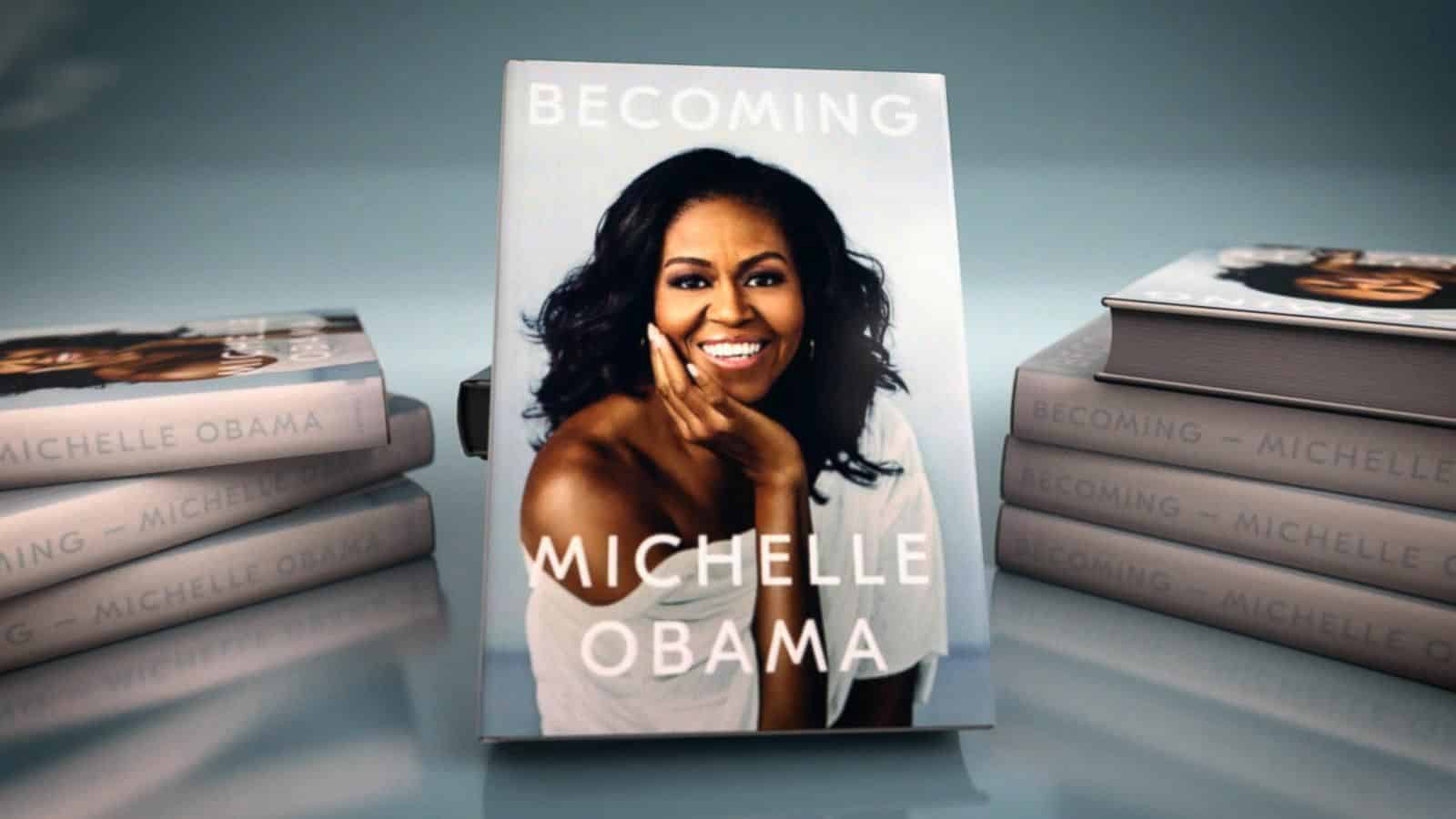
3
JanBest Books This Christmas
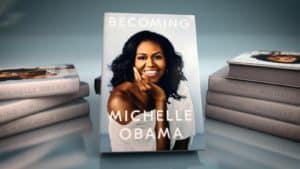 As a young girl, one of my preferred gifts at Christmas was a book. Classics like Heidi, Five Little Peppers, Swiss Family Robinson, and Little Women remain some of my most cherished possessions. I’ve always surrounded myself and my family with books and literally poured books into my children’s hands, overflowing the bookshelves in our home.
As a young girl, one of my preferred gifts at Christmas was a book. Classics like Heidi, Five Little Peppers, Swiss Family Robinson, and Little Women remain some of my most cherished possessions. I’ve always surrounded myself and my family with books and literally poured books into my children’s hands, overflowing the bookshelves in our home.
We all know librarians fancy books. More than that though, it takes reverence for books to pursue a profession about them. Yet, libraries are evolving places where exciting programs and marvelous things are becoming more and more relevant to a library’s mission. The field is attracting young professionals who are, in addition to clever researchers and keen readers, excited about technology, music, and social synergy.
Not surprisingly, librarians don’t have the corner on book-loving. My family of children and their spouses – educators, graphic designers, marketing gurus – all worship books. Family times always see at least one or two of the adults curled up in a nook – often with a book discovered on one of our many shelves. Our grandchildren held their first books as infants – small cloth or chunky board books were wedged into their strollers and car seats. Their own collections grew until their favorite crawling or toddling activity was swiping them all off the shelf into a heap. They always reached for their favorites: Barnyard Dance by Sandra Boynton, The Very Hungry Caterpillar by Eric Carle, or Brown Bear, Brown Bear, What Do You See? by Bill Martin. Most parents (and grandparents,alike) can recite the words by heart through closed eyelids until they open them to turn back to the first page. “Again?” And again. And again.
This year, I bought multiple copies of my two favorite 2018 books as presents for my children and friends. One is The Library Book by Susan Orlean. While I had listened to the audio version, I took out our library’s speed read copy so that I could hold the lovely book in my hand, stroking the cloth cover (no jacket) and flipping through the few illustrations. The back inside cover depicts a library book pocket and date due card. It’s so realistic that you can’t resist touching it with your fingers to find that it is only a photographic image.
The Library Book tells the story of the massive fire that burned in the Los Angeles Public Library on April 29, 1986. The mysterious blaze, officially determined to be arson, destroyed 400,000 books and damaged another 600-700,000 more. It burned for seven hours and was fought by over 350 firefighters from 60 firefighting companies. Fortunately, all 400 visitors and staff in the library at the time of the fire were evacuated. Heat swelled to over 2,000 degrees within the concrete walls and firefighters worked to cut 18 holes in the building to release the smoke and heat, thereby decreasing the temperature.
In 1986 the fire hadn’t received much attention. Chernobyl was the talk of the day that captured the media’s attention. More than 30 years later, the story unfolded through Orleans. Susan Orlean is a passionate author who began her research accidentally when she toured the Los Angeles Public Library and heard that some of the books still smelled of smoke. That smoking gun, so to speak, led to research.
The account in The Library Book is so much more than just the fire. It incorporates a history of the city library and a 1921 effort to finally build a respectable library in a sun-drenched, fantastical place named “The City of Angels.” The story includes interesting characterizations of its first and current librarians. In addition, Susan Orlean describes the notable and remarkable attempts to destroy books and libraries throughout world history. She includes the accomplishment of rebuilding the main library in the 1990s.
I gave copies of my other favorite 2018 book, Becoming by Michelle Obama, to my daughters. While it is principally an autobiography of the life of the “first” African American First Lady, it is most significantly a book about a capable woman who learned to navigate her responsibilities as a young girl and young woman, a mother, and a wife. All of our daughters and daughters-in-law are professionals, wives, and mothers and we watch them in awe as they balance all aspects of their lives. Obama’s act is one to follow and includes some of the immeasurable advice they will read.
Our grandchildren all received books, as they usually do for their birthdays, Christmas, and any other chance I have. It was our granddaughter Maeve’s book, the 75th anniversary edition of the Complete Adventures of Curious George (2016), that created the best reading adventure of 2018. While Maeve has copies of the Curious George Around Town books that she fell in love with earlier this year, I wanted to give her a copy of the seven original Curious George stories in one hefty volume. And hefty it is at 3.4 pounds.
There is debate about Curious George. Some feel (my ex-husband among them) that Curious George is obnoxiously curious and never has to suffer the consequences of his misbehavior. Others simply believe that Curious George is a good little monkey at heart who topples again and again into trouble. My ex-husband refused to read Curious George to any of my daughters; I suspect this might be why it warms my heart and tickles my fancy that my granddaughter Maeve can’t get enough of George!
The Complete Adventures actually includes only seven Curious George stories, but they are the originals published between 1941 and 1966, and written and illustrated by H.A. Rey and his wife, Margret. Our very own Curious George Christmas adventures included at least ten readings of Curious George Goes to the Hospital and Curious George Rides a Bike. Other stories in the book are Curious George Takes a Job and the original story, naturally named Curious George. “This is George. George was a good little monkey, but he was always curious.”
If you are a little bit curious, it’s not too late in the first weeks of 2019 to read some of my favorite gift books from 2018.
Charlotte Canelli is the Director of the Morrill Memorial Library in Norwood, Massachusetts. Read Charlotte’s column in the January 3rd edition of the Norwood Transcript and Bulletin.
